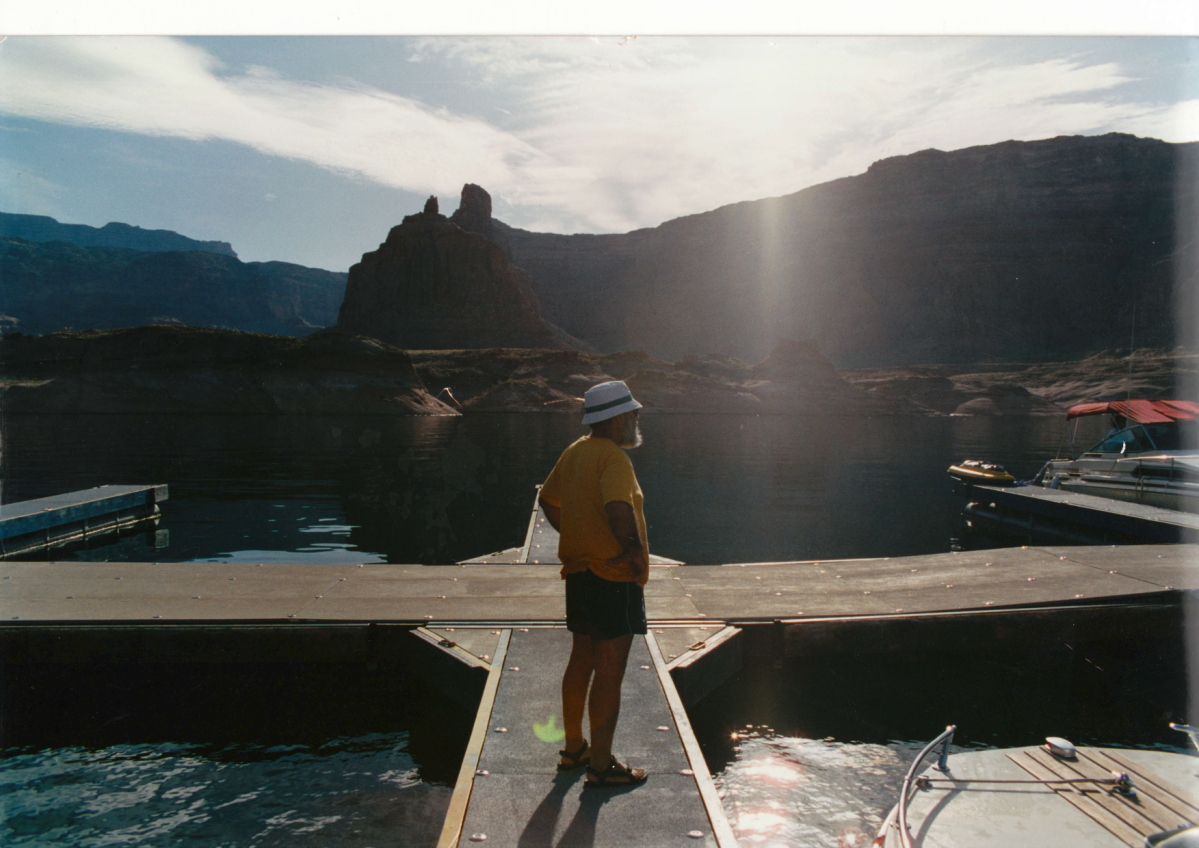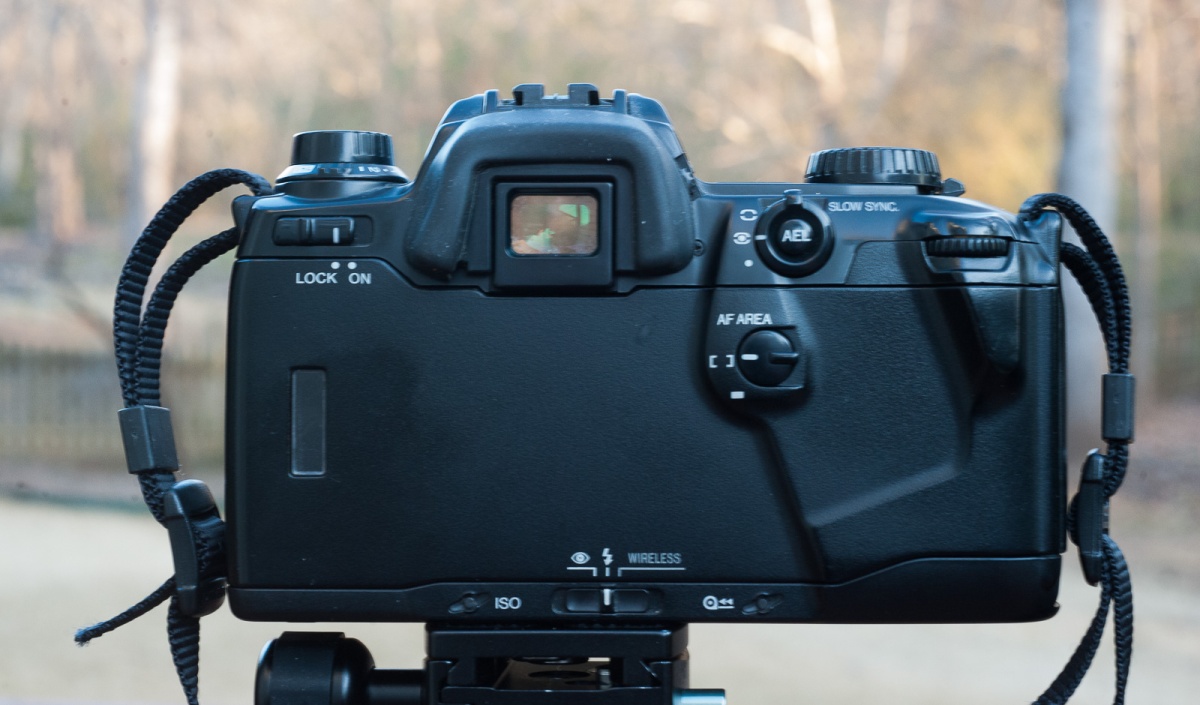
The 600si was at the same time Minolta’s cheapest enthusiast auto-focus SLR, and the test bed for the ergonomics of the future Maxxum 9, 7 and 7d.
After the launch of the 700si – at a higher price point than its predecessor the 7xi, Minolta had a gap to fill in their line-up. And because they had taken heat about the user interface of their xi generation of cameras, they took the opposite route for the 600si.
The design of its interface was so well received that it served as a model for the high end Maxxum 9 and 7 launched at the end of the century. And its influence could still be felt in the Konica-Minolta 7d, and in more recent Sony digital SLRs.
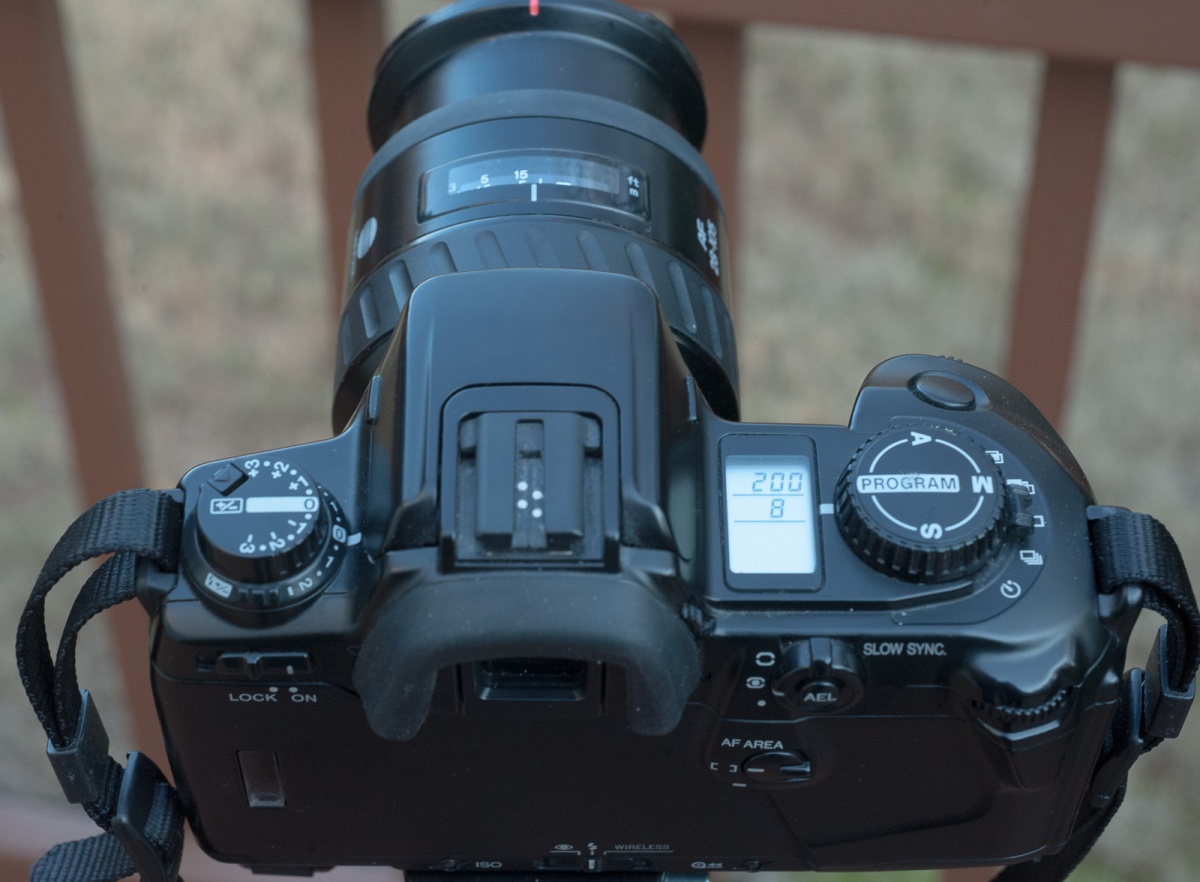
High level, the 600si is a cheaper variant of the 700si, somehow spec’d down technically, with a very different user interface and a lighter build. Instead of being designed with a modal interface (press the FUNC button to access a menu, and navigate the menu with the control wheels), the 600si is covered with dedicated knobs and rings to control the flash, the exposure mode, exposure compensation, and the drive mode. In addition to which a few rotating switches control the auto-focus setup and the metering modes.
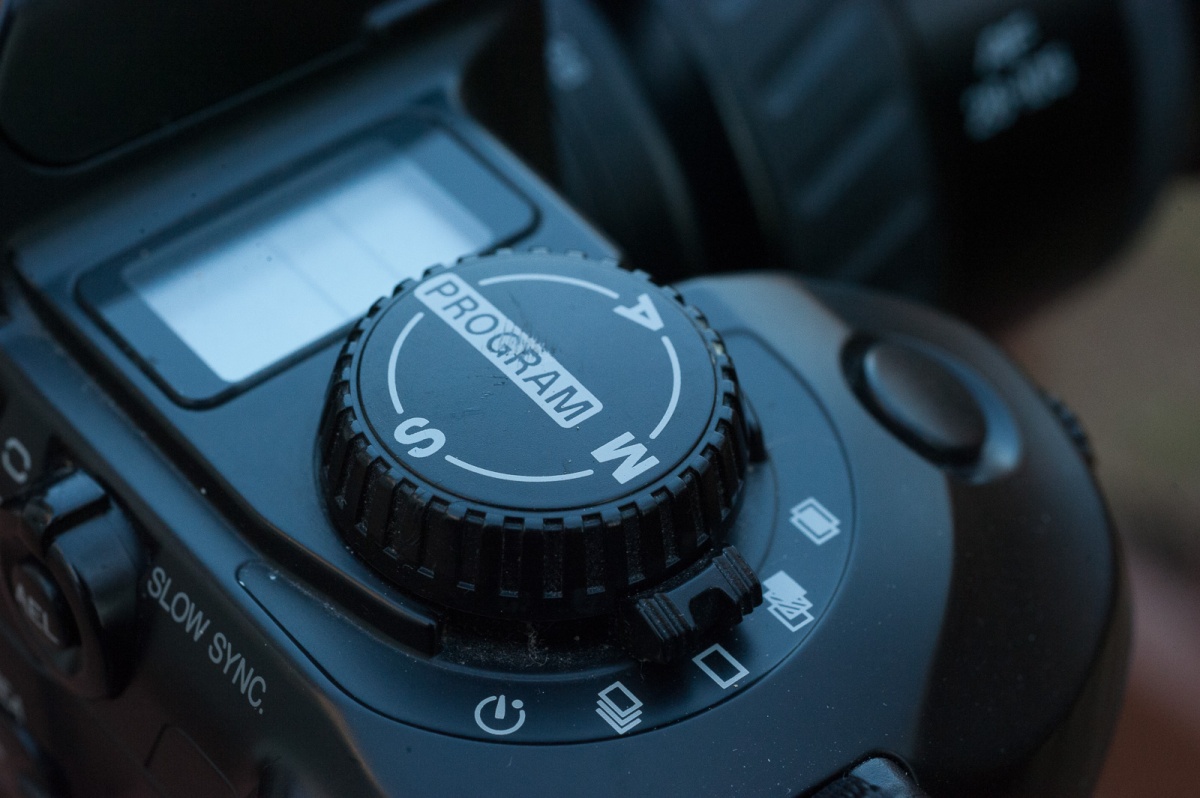
The Maxxum 600si is clearly engineered to a price point. Compared to the 9xi and the 700si, some components are one notch below, with a shutter limited to 1/4000 sec, an auto-focus sensor analyzing 3 zones instead of 4, no LCD overlay in the viewfinder and no “creative Card” slot. Fortunately, the camera retains a steel bayonet and the good long eye-point viewfinder of the higher end Minolta cameras. Minolta had cut cost intelligently.
The camera’s body is made of shiny black plastic, and the knobs and dials – in a dark shade of mat gray, look and feel extremely cheap – a bit like those of the low quality electronic devices you find in dollar stores. I’m not aware of any reliability issue specific to the 600si, so it must be better than it looks, but back in 1993 I would never have paid $500.00 for such a sorry looking camera, when the 700si was selling for only $100 more.
As for the interface, I’m not necessarily sold on the “one knob per function” type of ergonomics – I shot hundreds of rolls with a 700si and I never felt that its interface was getting in the way. I also played with a 9xi recently, and provided it’s set up to your preferences, it’s perfectly fine too. What really matters is your ability to verify at a glance how the camera is set up. If the top plate LCD is informative enough, it may be simpler to read it rapidly and know everything about the camera’s setup, than have to check each knob and switch individually.

The viewfinder is informative (with a lit up green LCD at the bottom of the focusing screen) and displays a very useful scale in semi-auto exposure mode. Interestingly, the 600si also operates stopped down in semi-auto mode with adapted lenses (using a M42 to Minolta A mount adapter) and is somehow usable with old Pentax Takumar lenses – (focusing manually is difficult through – the focusing screen of an auto-focus camera is not designed for that).

There is very little technical difference between the Maxxum cameras of the “6 to 9 segment” (7xi, 9xi, 700si, 600si, 800si), which were sold for the largest part of the nineties.
- Metering and auto-exposure had reached their final form with the 14 segment “honeycomb” pattern of the 7xi, which would be retained on all models until the final Maxxum of 2004.
- They share the same 3 or 4 sensor setup for the auto-focus, and still rely exclusively on the in-camera motor. The final models of 1999 and beyond (Maxxum 9 and 7) would adopt a different sensor module, and only the Maxxum 7 would gain the ability to work with ultrasonic (SSM) lenses.
- Lastly, they all share the same viewfinder (penta-prism, enlargement, high eye point). When comparing the viewfinder with similar Canon and Nikon cameras, it does not look as bright on the 600si, but we’re really nitpicking here.
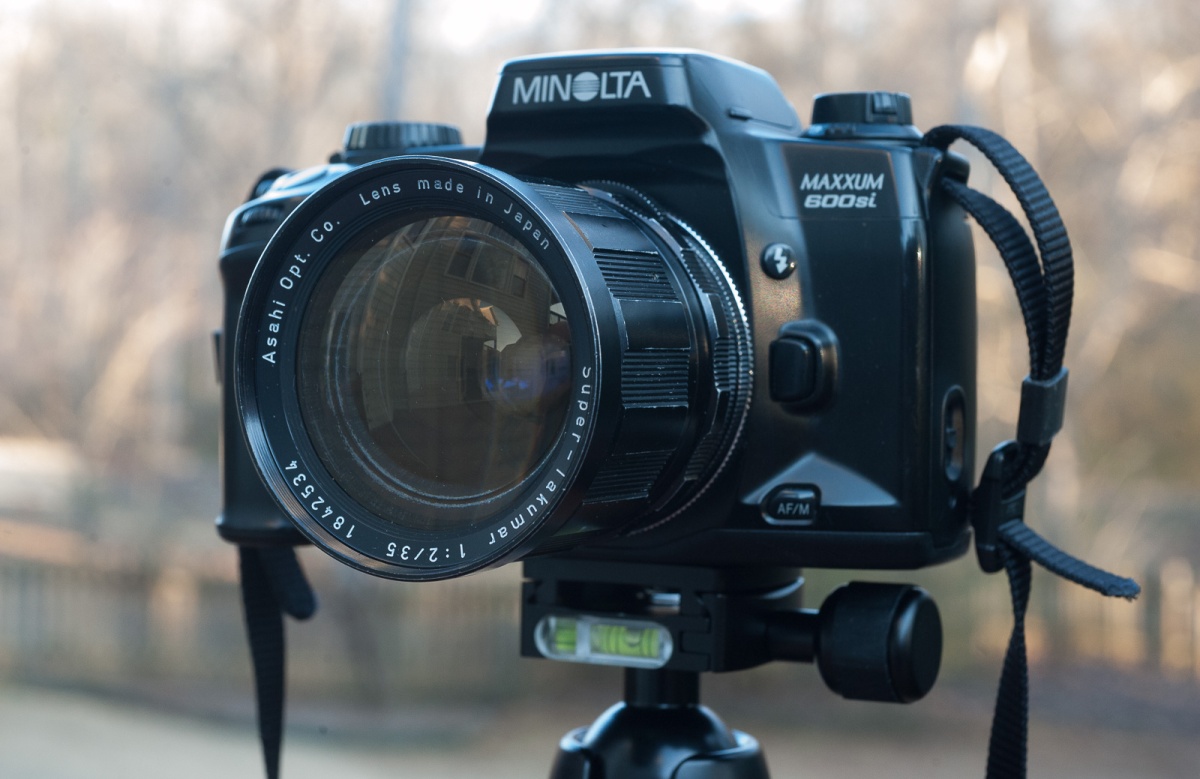
What’s my pick in the Minolta family, today ?
The Maxxum 9 and 7 are in a category of their own. They have unique characteristics (the all metal construction and the 100% viewfinder coverage for the Maxxum 9, the user interface for the Maxxum 7 with its large LCD display on the film door and its ability to use current Sony and Zeiss SSM lenses). They are purchased by photographers who want the very best of Minolta SLRs. And they still command top dollar.
Considering that there is no significant cost difference between rest of the Maxxum models – which are all more than 20 years old and are all selling for a few dozens of dollars at most, I would not consider any of the entry or mid level models; I would also avoid the quirky 7xi, and would limit my choice to a few cameras such as the 9xi, the 600si, the 700si and the 800si.
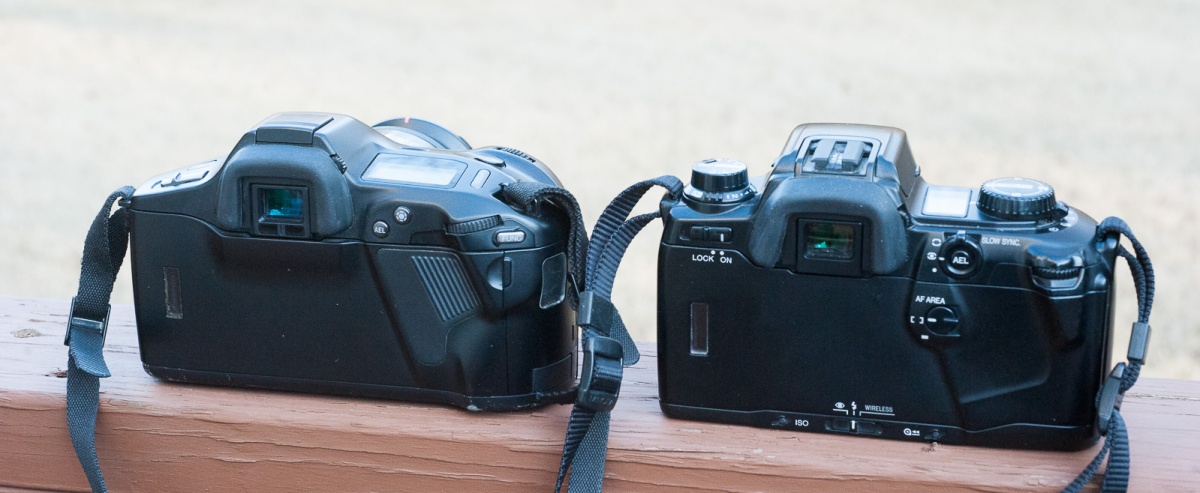
The 600si may be spec’d slightly below the three other models, but it does not really matter for photographers shooting film today – those are ancient cameras in any case and nobody will complain if they don’t shoot 6 frames per second. Any of those four cameras is very pleasant to use, and will produce well exposed pictures. The choice is primarily about your preferences regarding the user interface, and about your expectations when it comes to perceived build quality. Personally, I’ll stay with the 9xi.
What was my pick in the Minolta family, back then ?
Interestingly, when those cameras were on the shelves of the photo stores in the early nineties, I did not even consider the 9xi.
My first pick was the 7xi and its 28-105 Power xi Zoom. There is no doubt that the camera was making good pictures (autofocus and metering were top notch for the time) but it was eating its very expensive lithium batteries with an alarming regularity, the Power Zoom and the built-in flash popping up automatically were a pain, and there was no depth of field preview capability. I got rid of the Power xi Zoom after a few months, and replaced the 7xi with a 700si and its optional vertical grip 2 years later. With the grip, the 700si could run on conventional AA batteries. I liked the 700si a lot, and kept it until I switched from film to digital, in 2003.
When I bought the 700si, I never considered the 9xi (far too expensive, too big, too similar to the 7xi, with no way to support AA batteries that I knew of). And once I had the 700si, I was never tempted to “downgrade” to a 600si.
